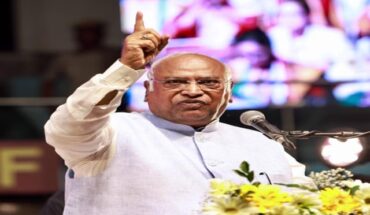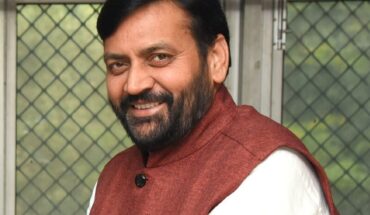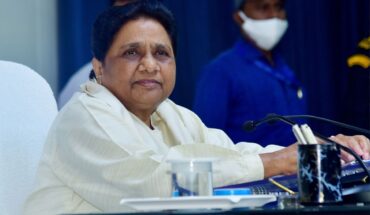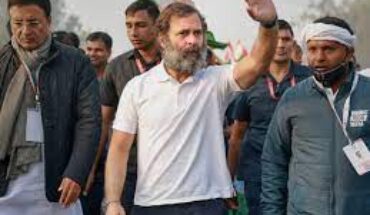New Delhi : As the battle for Delhi’s political landscape unfolded, the Bharatiya Janata Party (BJP) executed a meticulously planned electoral strategy, led by Union Home Minister Amit Shah and Delhi BJP President Virendra Sachdeva. Sources reveal that an internal survey was conducted to assess the party’s standing before finalizing candidates, rejecting an initial list presented by the Delhi unit in December.
Following the Delhi polls, a follow-up meeting in January, attended by the top brass, ultimately shaped the final ticket allocations. The delay in announcing candidates—despite receiving a staggering 2,100 applications—was a calculated move to minimize internal conflicts and consolidate support.
From MCD loss to strategic resurgence: BJP’s electoral playbook took shape soon after its defeat in the 2022 Municipal Corporation of Delhi (MCD) elections, where it won 104 out of 250 seats, losing to the Aam Aadmi Party (AAP), which secured 134 seats. A senior BJP strategist remarked, “The setback in civil polls prompted the party to shift its approach—moving away from communal rhetoric to a grassroots-driven model that expanded its vote share beyond 40%.”
The transformation hinged on building 27 specialized cells and seven fronts, tailored to engage caste, regional, and religious groups. An active member of the BJP noted, “The Purvanchal Morcha and the newly established Temple Cell played a pivotal role, fostering BJP’s connection with communities through religious outreach, including weekly Hanuman Chalisa recitations in residential welfare associations (RWAs).” More than 100 religious events, spanning Gurbani recitals to Shivratri celebrations, were strategically organised across the capital to attract youth and women voters.
Caste equation: BJP’s micro-targeting: Beyond religious outreach, the BJP fine-tuned its voter segmentation along caste and regional lines. The party categorized Delhi’s migrant population, recognizing the distinct political behavior of Purvanchali and Uttarakhandi voters. The Purvanchali electorate, comprising 25% of Delhi’s voters, had long been a stronghold for AAP leaders such as Sanjay Singh and Durgesh Pathak.
A BJP functionary explained, “We realized that retaining Manoj Tiwari as our key Purvanchali face, while replacing other candidates, would prove effective.” Uttar Pradesh Chief Minister Yogi Adityanath was roped in for rallies, and BJP leveraged alliances, allocating the Burari seat to JD(U) and the Deoli seat to LJP. Visual campaigns featured prominent Purvanchali leaders, and cultural touchpoints—like Litti-Chokha conferences and the Yamuna-cleaning promise before Chhath Puja—cemented BJP’s appeal among this voter base.
Similarly, the Uttarakhandi electorate was prioritized, with Mohan Singh Bisht and Ravindra Singh Negi securing tickets. A senior BJP leader stated, “By deploying Uttarakhand Chief Minister Pushkar Singh Dhami for targeted campaign rallies, we ensured a consolidated outreach to this crucial voting bloc.”
Jat-Gujjar mobilization: The key to outer-Delhi: In rural and border constituencies, BJP orchestrated an aggressive Jat and Gujjar outreach by organising Mahapanchayat held on December 22, 2024, in Mangolpuri saw key community leaders declaring their demand for a “native Chief Minister” for Delhi. This sentiment was reinforced just two days before polling when Jat and Gujjar representatives met Amit Shah, leading to an endorsement from 360 villages and 36 community groups.
A political analyst noted, “Jats, in particular, were disillusioned with AAP’s sidelining of leader Kailash Gahlot, and BJP capitalised on this frustration.” The party allocated 14% of its tickets to Jats and 11% to Gujjars, contrasting with AAP’s 11% allocation for both groups. This shift impacted around 22 to 25 assembly seats directly. BJP’s OBC Morcha was instrumental in activating Ramesh Bidhuri and Parvesh Verma—both key Jat and Gujjar leaders—to bolster support.
Beyond Delhi, BJP drew reinforcements from neighbouring states. Alka Gujjar, former vice president of Rajasthan BJP, was called in to rally Gujjar voters, while senior OBC leaders from Uttar Pradesh campaigned in strategic constituencies.
Shift from Hindutva to Caste-based politics: BJP’s strategy moved away from a broad Hindutva appeal to caste-based voter mobilization. While AAP held ground in Central Delhi, BJP dominated the outer and border areas, a pattern similar to its success in rural Haryana.
A senior BJP leader stated, “We tactically downplayed communal rhetoric in favor of welfare-driven messaging.” The party’s manifesto focused on social upliftment, with strategic outreach to Dalit groups. The defection of key AAP Dalit leaders—Sandeep Valmiki, Rajendra Pal Gautam, and Raj Kumar Anand—further weakened AAP’s influence in this segment.
BJP tailored its approach to Dalit subgroups, including Jatavs, Valmikis, and Dhobis. A BJP strategist revealed, “The Valmiki community, a traditional AAP stronghold, was targeted with direct welfare initiatives.” Amit Shah’s move to regularize 4,400 NDMC sanitation workers’ jobs in May 2023 was a strategic push to sway this voter base.
RSS factor: Silent but influential mobilisation– The Rashtriya Swayamsevak Sangh (RSS) emerged as an invisible but crucial force in BJP’s campaign. While its official stance remained the same—urging citizens to vote for the ‘best’ candidate and the ‘best’ party—its ground-level engagement significantly shaped voter sentiment.
An RSS functionary commented, “Under the banner of the ‘Save Delhi Campaign,’ we mobilised voters with the tagline ‘Shat-Pratishat Matdaan Karein, Behtar Delhi, Behtar Bharat’ (100% Voting for a Better Delhi, Better India).” This call for maximum voter participation was not just a civic message; it was a calculated effort to ensure a high turnout among sections of society that traditionally lean towards BJP’s policies.
Key issues that tilted the scale: RSS strategists identified a set of hyper-local concerns that resonated deeply with voters. These included sanitation, access to clean water, healthcare services, women’s safety, road infrastructure, the deteriorating condition of the Yamuna River, air pollution, illegal immigration, sewage systems, and employment opportunities.
An RSS Karyakarta Delhi-based remarked, “One of the most potent issues raised was the worsening condition of the Yamuna over the past decade.” Similarly, the ‘water crisis’ emerged as a compelling concern. An RSS worker noted, “More than 43% of residents in Jhuggi-Jhopri clusters are forced to purchase potable water from private tankers or bottled water vendors.”
Another critical issue was the failure of Delhi’s healthcare infrastructure. “Seventy percent of patients are compelled to seek treatment in private hospitals,” an RSS volunteer stated, countering AAP’s much-hyped Mohalla Clinic model.
Strategy of positive engagement: Unlike conventional political campaigns, RSS cadres refrained from directly attacking AAP or Congress. A Karyakarta explained, “We focused on issue-based discussions rather than personal or party-based criticisms.”
Interestingly, on polling and counting days, no RSS functionary was visibly involved in BJP’s booth management. A BJP worker noted, “While BJP workers handled election logistics, the RSS had already ensured a robust groundwork by shaping voter perceptions well in advance.”
Takeaway: Winning combination of strategy and groundwork:The BJP’s electoral success can be attributed to a blend of strategic candidate selection, hyper-local issue targeting, and the silent but effective mobilization by RSS. By focusing on key pain points such as water, healthcare, security, and governance, BJP was able to dismantle AAP’s narrative in several crucial constituencies.
Ultimately, a BJP worker summarized, “The BJP-RSS ecosystem operated in a synchronized yet distinctly separate manner, with the former managing the electoral machinery and the latter shaping voter sentiment. This alignment of strategy, grassroots mobilization, and controlled messaging proved to be the formula for BJP’s success in the election.”






